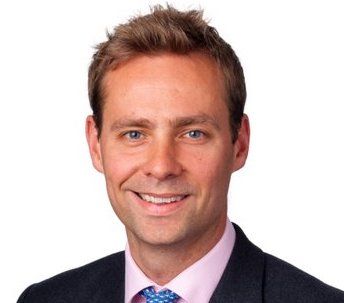“The way liquidity is evolving, [large-caps] will be the way to go,” Fraser Lundie, London-based head of credit at Hermes Investment Management, told FSA during a visit to Singapore.
He acknowledged that large-caps have always had more liquidity than small- and mid-caps, but “never to the extent it has now, given clustering of liquidity in such companies.
“This is due to banks’ inability — largely due to regulatory changes — to hold significant inventory, meaning their appetite for trading of smaller companies’ bonds has been reduced structurally and is unlikely to revert.”
He said if an investment process is driven by finding small companies and at the same time trying to be nimble, opportunistic and dynamic, difficulties will result. “I don’t think in the future you will be able to put those [two aims] together.”
But his large-cap preference is mainly due to other factors, he said.
“Multiple layers of capital structure, currency and curve, give us many different ways of accessing the company and expressing our view on it. This allows us to optimise the fixed income risks such as duration and convexity as well as the ‘equity risk’ of getting the company right in the first place.
“You can’t security-select in small companies, because small companies will only have one security.”
Portfolio choices
The Global High Yield Fund is benchmarked to the BAML Global High Yield Index, which is 100% sub- investment grade (high yield). The fund is currently around 80% exposed to sub-investment grade, almost all of which is rated BB, Lundie said.
The global portfolio has only about 2% exposure to Asia bonds, when other managers are saying Asia bonds are the sweet spot of fixed income investing right now for a variety of reasons including yield, US interest rate cuts, low inflation and political stability after key elections.
Lundie said the low exposure to Asia is because of lack of value.
“Yields are extremely low for quality companies in Asia. High yields are available in areas such as Chinese property, but we have a negative view on the sector fundamentals and see this as a potential value trap.”
In Europe (21% of the portfolio), to avoid negative rate bonds, he hedges exposure back to US dollars. “Buying a EUR denominated bond for a USD fund and hedging back to USD equates to around +2%,” he said.
In 2020, Lundie predicts investor bias will continue to be towards higher quality companies for several reasons.
“Low quality companies have been doing very poorly, but high quality companies have been doing extremely well. That’s because lower quality companies are more growth dependent, and growth has been disappointing.”
Companies less dependent on growth are benefiting more from the technical effect of quantitative easing, he said. “Some sectors that were deeply out of favour last year have done well, such as US home building.”
In addition to macro factors, the low quality part of the market has been disrupted by technology.
“You don’t really know what their business model is going to look like in five years’ time.”
As examples Lundie cited the recent collapse of Thomas Cook due to disruption from online travel sites and JC Penney, which was left behind in e-commerce.
He thinks that the only way that will change will be by rising default rates. “Those so called zombie companies need to restructure and leave the market.”
Lundie co-manages four funds available for sale to investors in Singapore. The Global High Yield Credit Fund has the longest track record.


















